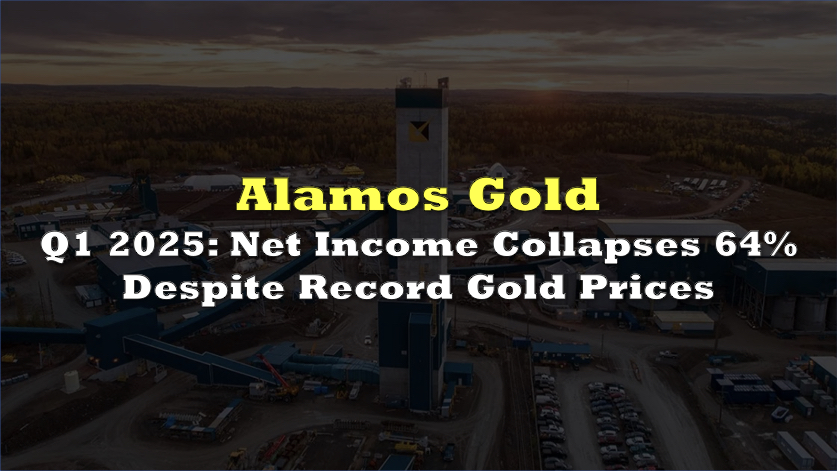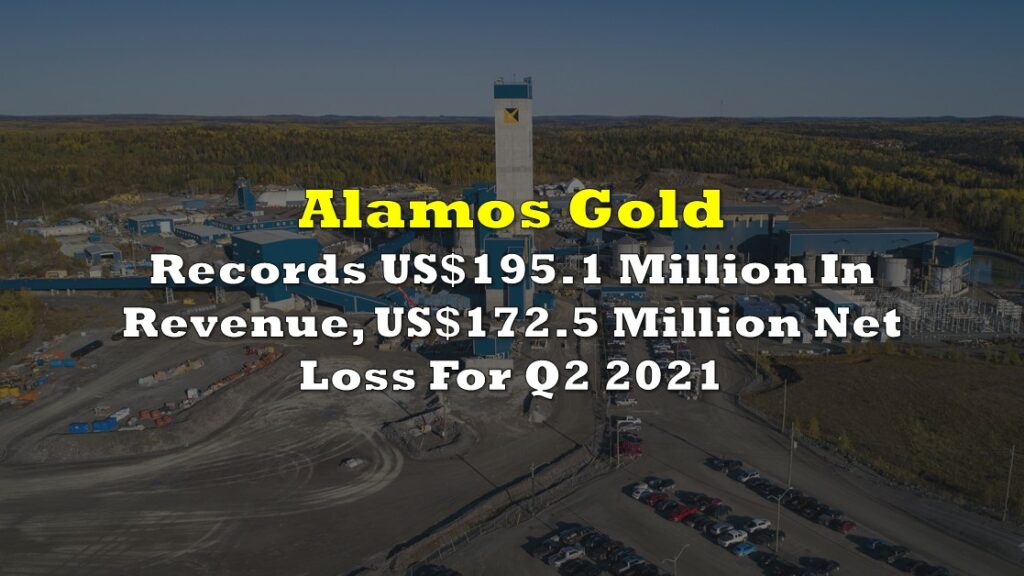Alamos Gold (TSX: AGI) reported Q1 2025 financial results, headlined by revenues climbing 20% year-over-year to $333.0 million—buoyed by a 35% surge in realized gold prices, driven by the highest quarterly realized gold price in company history at $2,802 per ounce, a 35% increase from $2,069 per ounce in Q1 2024.
However, gold sales volume declined 12% to 117,583 ounces, and realized prices were still $57 below the average London PM Fix of $2,859 per ounce, due to the delivery of 12,346 ounces into a 2024 prepayment facility priced at $2,524/oz.
Cost of sales, however, jumped 12% to $195.2 million, with unit costs per ounce sold surging to $1,660 versus $1,307 in the same period last year. Total cash costs per ounce increased 31% year-over-year to $1,193, while AISC ballooned 43% to $1,805 per ounce—well above both internal guidance and industry averages. This margin compression, largely driven by the inclusion of higher-cost ounces from Magino and a 45% increase in share-based compensation revaluation, sharply undercut the revenue gains.
Bottom-line performance fell sharply, with net earnings falling 64% to $15.2 million from $42.1 million in Q1 2024. Earnings before tax came in at $25.7 million, down from $75.6 million a year earlier, despite stronger top-line contributions.
Adjusted net earnings came in at $59.8 million ($0.14 per share), up 17% YoY, but heavily reliant on non-cash adjustments, including the reversal of a $46.3 million unrealized loss on commodity derivatives.
Operating cash flow fell 27% to $79.6 million, while free cash flow turned deeply negative at $20.1 million, compared to a positive $24.9 million a year ago. This was mainly due to $52.8 million in cash tax payments, prepayment settlement, and a 21% YoY rise in capital spending to $101.7 million. Even when adjusting for working capital, operating cash flow was virtually flat year-over-year at $131.4 million.
Capital expenditures soared 20% YoY to $101.7 million, driven by aggressive spending on growth projects like Phase 3+ Expansion, PDA, and Lynn Lake. Total sustaining capital reached $31.1 million, while growth capex hit $66.3 million.
Cash and equivalents came in at $289.5 million, down from $327.2 at the end 2024. Total current liabilities decreased slightly to $410.6 million.
On production, gold output fell 8% YoY to 125,000 ounces. Island Gold District was the sole production bright spot, increasing output 77% to 59,200 ounces, but this was overshadowed by significant declines at Mulatos (–51%) and Young-Davidson (–12%).
Cost pressures intensified at every site: Island Gold saw cost of sales rise 138% YoY with AISC reaching $1,446/oz (up 31%), Young-Davidson posted an AISC of $1,655/oz, a 12% jump; and Mulatos reported an alarming AISC of $1,320/oz, up 46% year-over-year.
The company reaffirmed its full-year production guidance of 580,000–630,000 ounces and expects a material reduction in AISC in Q2 and beyond, with long-term plans to scale to 900,000–1,000,000 ounces annually. This includes total capex guidance between $599 and $699 million—a sharp increase from prior years.
Alamos Gold last traded at $39.41 on the TSX.
Information for this briefing was found via the sources mentioned. The author has no securities or affiliations related to this organization. Not a recommendation to buy or sell. Always do additional research and consult a professional before purchasing a security. The author holds no licenses.









